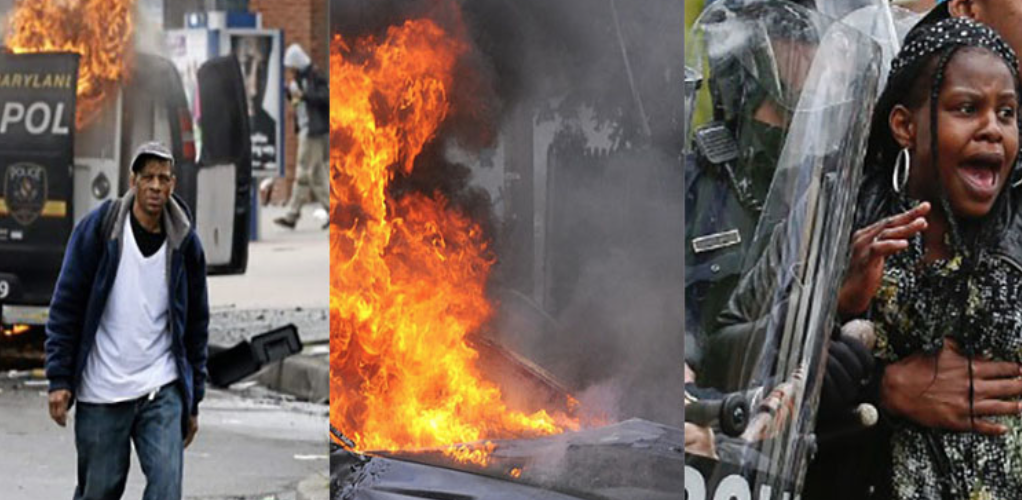If you lived in or near Baltimore during the spring and early summer of 2015 then you were affected, one way or another, by the waves of urban violence that shook the city.
This tragedy was impossible to ignore. It was more than images on the evening news. You could stand in your yard and see the smoke over the neighborhoods east and west of downtown. One night, the fires were so large that I could see the reddish-gold glow in the sky — fires that included a community center and senior-housing unit that was being built by Southern Baptist Church in East Baltimore.
What happened to Baltimore in those months, and the stunning violence that has gripped the city ever since, is a massive, complex story. It’s a police story. It’s a story about drugs, young men on the loose and shattered families. It’s an education story. It’s a political story. It’s a tragic story about government officials trying to find someone to blame.
But if you followed the local news during those months (and some of the national television coverage) you also knew that what happened in Baltimore was a religion story.
This is no surprise, since black churches — old and new, past and present — have always played a major role in urban life when people try to cope with danger and tragedy. No one worked harder than Baltimore pastors when it came time to respond to the violence and the bitter realities that provided fuel for the fires.
That’s why I was disappointed when I read a massive story on this subject that ran the other day, co-produced by ProPublica and The New York Times Magazine. Here’s the dramatic double-decker headline:
The Tragedy of Baltimore
Since Freddie Gray’s death in 2015, violent crime has spiked to levels unseen for a quarter century. How order collapsed in an American city.
Let me be clear. This is a must-read story for anyone who cares about urban life and issues facing the poor. I am also not arguing that it was wrong for the story to devote so much ink to police and government issues.
I am simply saying that this story needed to include some content from pastors and other church leaders — if one of the goals was to show how Baltimore people responded to the riots, or uprisings, of 2015. The story needed the voices of religious believers, if the goal was to listen to Baltimore.
I even wondered if there was a religion ghost linked to the dramatic anecdote that opens this feature:
On April 27, 2015, Shantay Guy was driving her 13-year-old son home across Baltimore from a doctor’s appointment when something — a rock, a brick, she wasn’t sure what — hit her car. Her phone was turned off, so she had not realized that protests and violence had broken out in the city that afternoon, following the funeral of Freddie Gray, the 25-year-old man who drew national attention eight days earlier when he died after suffering injuries in police custody.
As she saw what was happening — fires being set, young people and police officers converging on the nearby vortex of the disorder — she pushed her son, Brandon, down in his seat and sped home. “Mom, are we home yet?” Brandon asked when they pulled up at their house just inside the city line, where they lived with Guy’s husband, her grown daughter and her husband’s late-teenage son, brother and sister-in-law.
“Yeah,” she told him.
“You’re still holding my head down,” he said.
Guy grew up in an impoverished, highly segregated part of West Baltimore near what was now the focal point of the street clashes, but she had long since climbed into a different stratum of the city’s society; she was working as an information-technology project manager for T. Rowe Price, the Baltimore-based mutual-fund giant. Seeing her old neighborhood erupt changed her life. After long discussions with her husband, who manages the office of a local trucking company, she quit her job and went to work for a community mediation organization. “It just felt like it was the work I was supposed to be doing,” she said.
It’s possible that Guy’s motives are secular and, for the most part, faith-free.
However, “mediation” is a word that, for many, has religious, as well as legal, implications. I wonder what percentage of this organization’s work takes place in Baltimore churches, as well as libraries and other community centers
At one point in this long feature, reporter Alec MacGillis — who lives and works in Baltimore — added a personal note providing the only real hint that churches were part of this drama.
I have grown accustomed to scanning the briefs column in The Baltimore Sun in the morning for news of the latest homicides; to taking note of the location of the latest killings as I drive around town for my baseball coaching and volunteering obligations. In 2017, the church I attend started naming the victims of the violence at Sunday services and hanging a purple ribbon for each on a long cord outside. By year’s end, the ribbons crowded for space, like shirts on a tenement clothesline.
OK, I’ll ask. What church? Was this church part of the coalitions that formed to help deal with the crisis?
Again let me stress that this is an excellent story that takes on a massive subject. It’s hard to know what parts to quote, to show that. For example, if you see Baltimore in the headlines these days, this is what you are going to see:
… In the years that followed, Baltimore, by most standards, became a worse place. In 2017, it recorded 342 murders — its highest per-capita rate ever, more than double Chicago’s, far higher than any other city of 500,000 or more residents and, astonishingly, a larger absolute number of killings than in New York, a city 14 times as populous. Other elected officials, from the governor to the mayor to the state’s attorney, struggled to respond to the rise in disorder, leaving residents with the unsettling feeling that there was no one in charge. With every passing year, it was getting harder to see what gains, exactly, were delivered by the uprising.
MacGillis also does a fine job of showing the roller-coaster that Baltimore people have been on for decades, with glimmers of hope following years of despair — only to be swallowed by more violence and corruption. Here are two samples:
To understand how things in Baltimore have gotten so bad, you need to first understand how, not so long ago, they got better. Violence was epidemic in Baltimore in the late 1980s and early 1990s, as it was in many other cities, as crack intruded into a drug market long dominated by heroin. In 1993, the city crossed the 350-homicide mark. These were the years that inspired “The Wire.” They also gave rise to Martin O’Malley, a city councilman who was elected mayor on an anti-crime platform in 1999.
My family lived just off the Baltimore Beltway from 2005-2015, south of downtown (in an old blue-collar neighborhood called Ferndale, a few blocks outside the city proper). For the most part, that was a good decade for the Baltimore area, as noted in this passage:
Until 2015, Baltimore seemed to be enjoying its own, more modest version of this upswing. Though it is often lumped in with Rust Belt economic casualties like Cleveland, St. Louis and Detroit, Baltimore in fact fared better than these postindustrial peers. Because of the Johns Hopkins biomedical empire, the city’s busy port and its proximity to Washington, metro Baltimore enjoyed higher levels of wealth and income — including among its black population — than many former manufacturing hubs.
The city still had its ills — its blight, suburban flight, segregation, drugs, racial inequality, concentrated poverty. But as recently as 2014, Baltimore’s population, which is 63 percent African-American, was increasing, up slightly to 623,000 after decades of decline. Office buildings downtown were being converted to apartments, and a new business-and-residential district was rising east of the Inner Harbor. The city was even attracting those ultimate imprimaturs of urban revival, a couple of food halls.
Then the story changed. Again.
Whatever happens next, I know that reporters who want to listen to the voices of Baltimore will need to get to know the pastors of the churches at the heart of life in those troubled neighborhoods.
Yes, some churches have fled to the suburbs. But others have dug in for the long haul. That’s Baltimore, too. That’s part of the story.
FIRST IMAGE: Screenshot of photo collage featured at the American Journalism Review with this article: “How the Media Covered the Baltimore Riots.”










